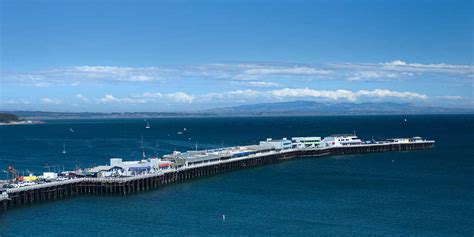
Data Reported Since: October 2012
Sampling Frequency: Weekly, Wednesdays
Time of Day: AM
Sample Types Reported:
particulate domoic acid
dissolved nutrients: nitrate, ammonium, phosphate, silicate
water temperature
chlorophyll a
phytoplankton cell abundances: Dinophysis, Alexandrium, Pseudo-nitzschia multiseries, Pseudo-nitzschia australis
View data in the CalOOS Data Portal
Principal Investigator: Raphael Kudela, University of California, Santa Cruz
Sampling Contact: Kendra Negrey, University of California, Santa Cruz
Relevant Santa Cruz Wharf Publications
Kudela, R. M., Anderson, C., & Ruhl, H. (2021). The California Harmful Algal Bloom Monitoring and Alert Program: A Success Story for Coordinated Ocean Observing. OBSERVING, 2(5), 84.
Moriarty, M. E., Tinker, M. T., Miller, M. A., Tomoleoni, J. A., Staedler, M. M., Fujii, J. A., … & Johnson, C. K. (2021). Exposure to domoic acid is an ecological driver of cardiac disease in southern sea otters. Harmful Algae, 101, 101973.
Fischer, A. D., Hayashi, K., McGaraghan, A., & Kudela, R. M. (2020). Return of the “age of dinoflagellates” in Monterey Bay: Drivers of dinoflagellate dominance examined using automated imaging flow cytometry and long‐term time series analysis. Limnology and Oceanography, 65(9), 2125-2141.
Schulien, J. A., Peacock, M. B., Hayashi, K., Raimondi, P., & Kudela, R. M. (2017). Phytoplankton and microbial abundance and bloom dynamics in the upwelling shadow of Monterey Bay, California, from 2006 to 2013. Marine Ecology Progress Series, 572, 43-56.
Lane, J. Q., Roddam, C. M., Langlois, G. W., & Kudela, R. M. (2010). Application of Solid Phase Adsorption Toxin Tracking (SPATT) for field detection of the hydrophilic phycotoxins domoic acid and saxitoxin in coastal California. Limnology and Oceanography: Methods, 8(11), 645-660.

